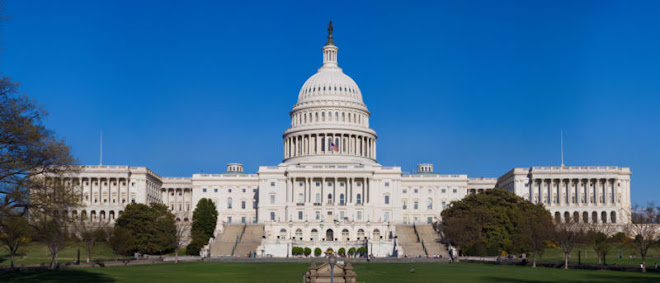From The Washington Post and Common Dreams.org:
Published on Tuesday, December 21, 2010 by The Washington Post
Census Data Realigns Congressional Districts in Key Political States
by Sandhya Somashekhar and Aaron Blake
Republican-leaning states in the South and West that experienced a population boom over the past decade will gain political clout, while some historically Democratic states in the Rust Belt will lose it, according to Census Bureau figures released Tuesday aimed at ensuring proportional representation in the House.
Eight states will gain congressional districts, including five that backed Sen. John McCain (R-Ariz.) for president two years ago. The big winner was Texas, a state that routinely backs Republicans for president. Its population has swelled by about 21 percent since 2000 and as a result will add four House seats.
Census Bureau director Robert Groves speaks during a presentation of the 2010 Census results at the National Press Club in Washington on Dec. 21. (Yuri Gripas/Reuters)The gains come at the expense of some states whose growth has been stunted by the decline of manufacturing. Many of them have been historically Democratic; of the 10 states losing seats, eight backed President Obama in the 2008 presidential election. New York and Ohio took the biggest hits, losing two congressional seats each.
Much of the population spike in states that gained congressional districts, such as Texas and Arizona, is due to an influx of Hispanics, who tend to vote Democratic. But it is viewed as a net benefit for Republicans because the growth occurred in Republican-leaning states, and because so many state legislatures shifted to Republican control in November. In most states, it is the legislature that is in charge of the politically charged job of redrawing congressional boundaries.
The changes were announced as part of the first release of Census 2010 data, which found that the nation had 308,745,538 residents on April 1, 2010, up about 9.7 percent from 2000. It is the slowest rate of growth since the 1930s, Census officials announced at a media briefing Tuesday.
The numbers demonstrated a continuation of a long-standing trend that has seen the nation's population center shift away from the Northeast and Midwest and into the South and West. Nevada was the fastest-growing state, having swelled by about 35 percent since 2000. On the other end of the spectrum, Michigan saw a population decline of 0.6 percent.
The Census Bureau is required under the Constitution to reapportion House seats every 10 years to ensure that all 435 congressional districts have roughly the same population. Under the new arrangement, the average population of a congressional district will be 710,767, compared with 646,942 in 2000 - and about 34,000 in 1790.
The changes have implications for presidential elections because House seats determine the number of votes that each state has in the electoral college. On Monday, White House spokesman Robert Gibbs played down any effect the change might have on Obama's reelection prospects, noting that the Census simply accounts for population shifts and does not dramatically change the political landscape.
"I don't think that shifting some seats from one area of the country to another necessarily marks a concern that you can't make a politically potent argument in those new places."
The shift will change the partisan lean from blue to red of a net of six electoral college votes. Obama beat McCain by 192 electoral college votes in 2008.
Overall, 18 states lost or gained congressional districts. Texas, as expected, gained the most seats, moving from 32 to 36 seats. Florida was the only other state to gain multiple seats, adding two and bringing it to 27 seats.
Six other states gained a single seat: Arizona, Georgia, Nevada, South Carolina, Utah and Washington.
The biggest losers were New York and Ohio, which each lost two seats. Eight other states lost a single seat: Illinois, Iowa, Louisiana, Massachusetts, Michigan, Missouri, New Jersey and Pennsylvania.
Republicans will control the redistricting process in eight of the states experiencing changes, while Democrats will control it in two.
© 2010 The Washington Post
A READER ON THE STATE OF THE POLITICAL DECAY AND IDEOLOGICAL GRIDLOCK BETWEEN ONE GROUP WHO SEEK TO DESTROY THE COUNTRY, AND THOSE WHO WANT TO RESTORE IT.
The Rise and Fall of Hope and Change




Alexis de Toqueville
The American Republic will endure until the day Congress discovers that it can bribe the public with the public's money.
Alexis de Tocqueville
Alexis de Tocqueville
The United States Capitol Building

The Constitutional Convention

The Continental Congress

George Washington at Valley Forge



Subscribe to:
Post Comments (Atom)
No comments:
Post a Comment